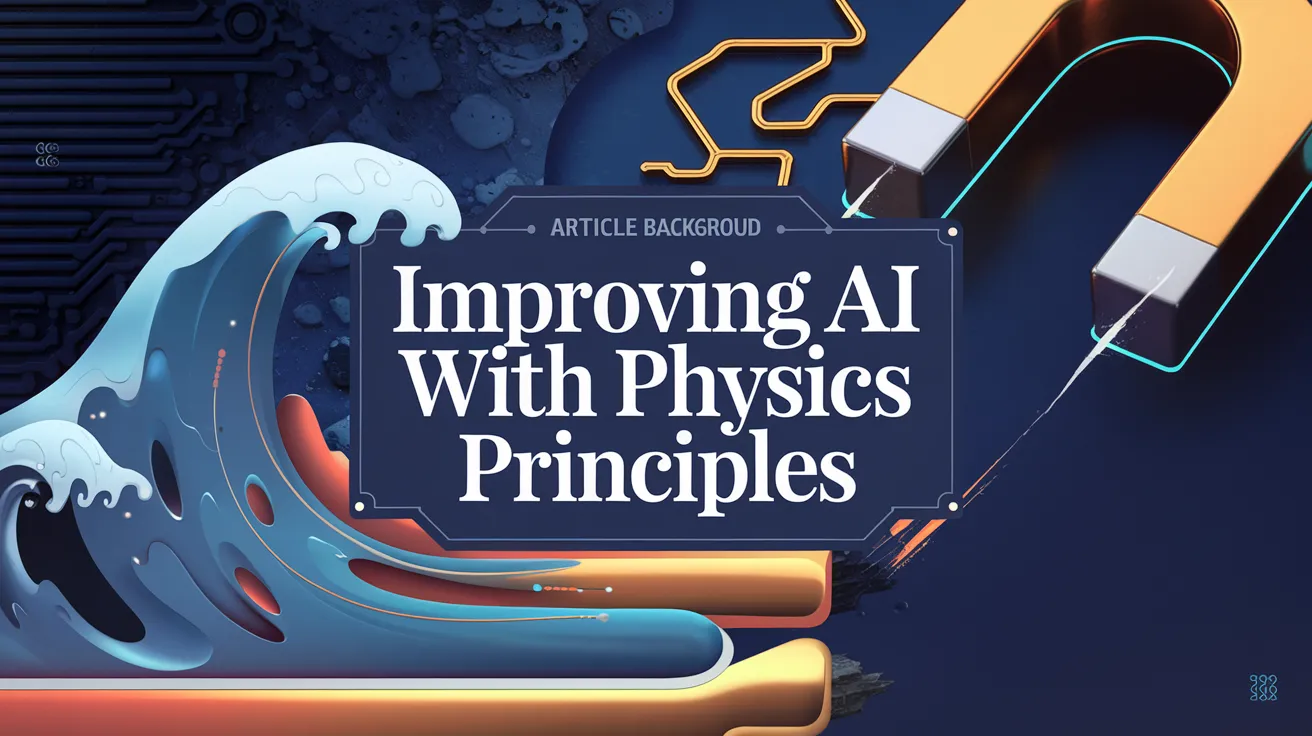Improving AI with Physics Principles

Rose Yu’s journey into the world of artificial intelligence (AI) has been marked by a blend of computer science and physics. Starting with a birthday gift of a computer at age ten, she went on to excel academically, earning recognition for her innovative research and a Presidential Early Career Award. Now an associate professor at the University of California, San Diego (UCSD), Yu is at the forefront of a burgeoning field known as ‘physics-guided deep learning.’ This approach leverages principles of physics to enhance AI systems, achieving significant improvements in real-world applications.
The Genesis of Combining Physics with AI
Yu’s interest in integrating physics with deep learning began during her graduate studies at the University of Southern California (USC). Faced with the daunting problem of Los Angeles traffic congestion, she sought to utilize the dynamic nature of traffic data through deep learning techniques. By conceptualizing traffic flow as analogous to fluid dynamics and employing graph theory, Yu and her team created a model that significantly improved traffic predictions, enhancing forecast reliability from about 15 minutes to one hour, a substantial advancement that led to the deployment of their code in Google Maps.
Expanding Horizons: Climate Modeling and More
Building on her success with traffic forecasting, Yu pivoted to tackle climate modeling challenges. She recognized that predicting turbulent flows—an area fraught with uncertainties—could benefit from physics-guided methodologies. By training deep neural networks on established numerical simulations rather than relying solely on slow calculations, her models managed to accelerate predictions for turbulent behavior by impressive factors across different dimensional settings. These advancements could eventually enhance larger climate prediction models, particularly for hurricanes.
Turbulence: A Universal Concern
Turbulence, which manifests in various contexts—from blood flow dynamics to drone stabilization—presents complex challenges. During her postdoctoral work at Caltech, Yu coauthored research focused on using neural networks to model and control turbulent airflow surrounding drones, leading to improved control during flight operations. Currently, she collaborates with General Atomics to develop predictive models for controlling plasma behavior in fusion power experiments, integrating AI with the physics of high-temperature plasmas.
The Vision of AI Scientist
Yu’s ambitious vision, described as “AI Scientist,” aims to create a suite of digital lab assistants that combine human and AI capabilities based on the principles of physics. By building an ensemble of algorithms that can autonomously discover symmetrical properties from data, these tools are expected to facilitate groundbreaking research by generating novel hypotheses and improving various scientific tasks, from weather forecasting to exploring causal relationships.
The Future of AI in Scientific Research
The AI Scientist initiative isn’t merely a singular neural network but a multifaceted system capable of handling various data types to support scientific discovery. Although AI has the potential to revolutionize data organization and hypothesis generation, Yu emphasizes that it is no substitute for human creativity in scientific inquiry. Her vision for the future is one where AI alleviates researchers from intensive data tasks while allowing them to focus on the creative and critical aspects of scientific exploration. This balanced partnership could redefine how research is conducted and accelerate the pace of discovery.
Ultimately, Rose Yu’s endeavors illustrate the promising intersection of physics and artificial intelligence, showcasing how foundational scientific principles can contribute to the evolution of AI technologies, making them faster, smarter, and more effective in addressing complex challenges facing society today.